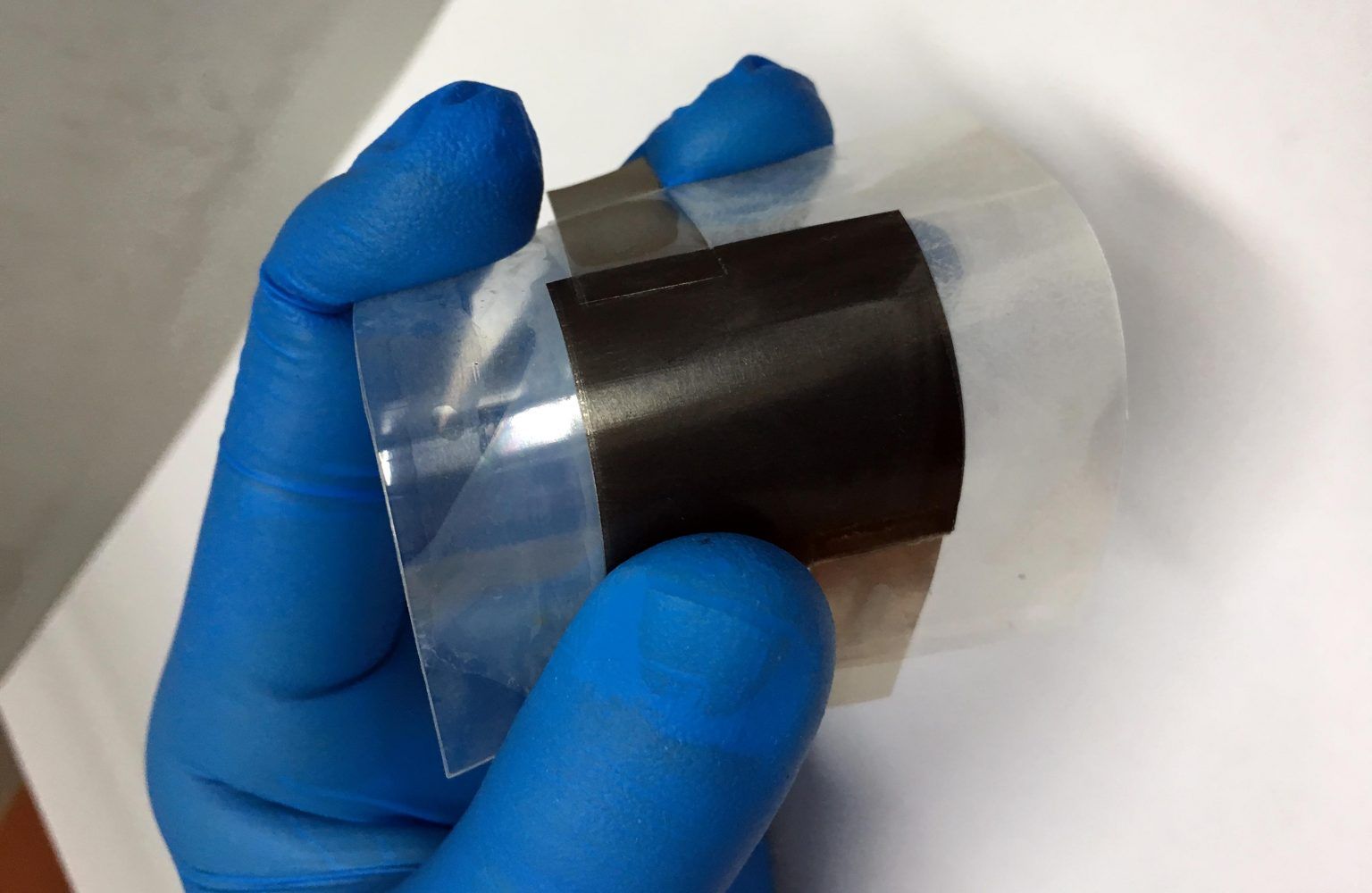Nanospecialists have created a new bendable supercapacitor which can store a record amount of energy for a long time from just a quick charge. The researchers used graphene as a raw material to make the breakthrough which could lead to wearable electronics, improved electric vehicles, and lighter, more flexible mobile phones.
The discovery is the result of a collaboration by scientists from University College London and the Chinese Academy of Sciences and represents a major advance in portable power supply technology.
Previous research into high-powered, fast-charging supercapacitors had always met with the problem of how to hold large amounts of energy in small spaces. Without this challenge being solved, electronic components must remain relatively big and bulky, limiting the development of future devices.
“Our new supercapacitor is extremely promising for next-generation energy storage technology as either a replacement for current battery technology, or for use alongside it, to provide the user with more power,” explains Dr Zhuangnan Li, the study’s first author. “We designed materials which would give our supercapacitor a high-power density - that is how fast it can charge or discharge - and a high energy density - which will determine how long it can run for. Normally, you can only have one of these characteristics, but our supercapacitor provides both, which is a critical breakthrough.”
The key to the innovation is an electrode made from multiple layers of graphene. Charged ions are then trapped between the layers.
However, the team found that by changing the size of the pores in the graphene, the capacitor could store a charge more efficiently. Ultimately, by tuning the pore size to match the diameter of the ions, the team were able to maximise energy density to a record level for a carbon-based supercapacitor.
The team have now published their findings in the journal Nature Energy, where they explain the discovery of a, “… supercapacitor [that] delivers a stack volumetric energy density of 88.1 Wh l−1 [Watt-hour per litre] in an ionic liquid electrolyte, representing a critical breakthrough for optimizing the porosity towards compact energy storage. Moreover, the optimized film electrode is assembled into an ionogel-based, all-solid-state, flexible smart device with multiple optional outputs and superior stability, demonstrating enormous potential as a portable power supply in practical applications.”

This is a major achievement, as the UCL website reports; “Similar fast-charging commercial technology has a relatively poor energy density of 5-8 Wh/L and traditional slow-charging but long-running lead-acid batteries used in electric vehicles typically have 50-90 Wh/L.”
Additionally, “While the supercapacitor developed by the team has a comparable energy density to state-of-the-art value of lead-acid batteries, its power density is two orders of magnitude higher at over 10,000 Watt per litre.”
“Successfully storing a huge amount of energy safely in a compact system is a significant step towards improved energy storage technology,” said senior author Professor Ivan Parkin, the Dean of UCL Mathematical & Physical Sciences at UCL. “We have shown it charges quickly, we can control its output and it has excellent durability and flexibility, making it ideal for development for use in miniaturised electronics and electric vehicles. Imagine needing only ten minutes to fully-charge your electric car or a couple of minutes for your phone and it lasting all day.”
However, beyond its small size and energy-holding properties, what also impresses is the new component’s ability to bend.
The flexibility is because the electrodes are made up of multiple layers of graphene which form a thin, yet strong film. The team used this to create a proof-of-concept device made from two graphene electrodes with a gel-like substance in between to act as a chemical medium to transfer the charge.
The result is a 6cm2 supercapacitor with the energy-holding ability to power dozens of light-emitting diodes (LEDs) while remaining highly flexile.
As the press release notes, “Even when bent at 180 degrees, it performed almost the same as when it was flat, and after 5,000 cycles, it retained 97.8% of its capacity.”

Overall, the new design not only holds more power, but is also a safer and more practical solution than current battery technology. As Li notes, “… the supercapacitor can bend to 180 degrees without affecting performance and doesn’t use a liquid electrolyte, which minimises any risk of explosion and makes it perfect for integrating into bendy phones or wearable electronics.”
While the use of graphene as a raw material for small, yet powerful and flexible electronics my have obvious applications in today’s consumer device market, the researchers see their discovery as part of a range of uses for nanomaterials in forthcoming electronics.
“Over the next thirty years,” adds senior author Professor Feng Li, “the world of intelligent technology will accelerate, which will greatly change communication, transportation and our daily lives. By making energy storage smarter, devices will become invisible to us by working automatically and interactively with appliances. Our smart cells are a great example of how the user experience might be improved and they show enormous potential as portable power supply in future applications.”
Photo credit: UCL, TheConversation, PRLog, & ScienceDaily
